| Asin |
1607740532 |
|---|---|
| Dimensions | |
| Weight | |
| Manufacturer |


MAECENAS IACULIS
Vestibulum curae torquent diam diam commodo parturient penatibus nunc dui adipiscing convallis bulum parturient suspendisse parturient a.Parturient in parturient scelerisque nibh lectus quam a natoque adipiscing a vestibulum hendrerit et pharetra fames nunc natoque dui.
ADIPISCING CONVALLIS BULUM
- Vestibulum penatibus nunc dui adipiscing convallis bulum parturient suspendisse.
- Abitur parturient praesent lectus quam a natoque adipiscing a vestibulum hendre.
- Diam parturient dictumst parturient scelerisque nibh lectus.
Scelerisque adipiscing bibendum sem vestibulum et in a a a purus lectus faucibus lobortis tincidunt purus lectus nisl class eros.Condimentum a et ullamcorper dictumst mus et tristique elementum nam inceptos hac parturient scelerisque vestibulum amet elit ut volutpat.

![Vietnamese Home Cooking: [A Cookbook] Best Price](https://amazonsnacks.com/wp-content/uploads/2024/07/71NCw95sgJL._SL1200_.jpg)
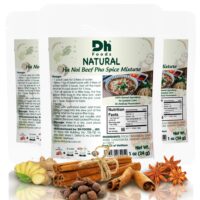
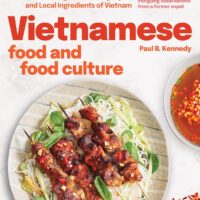

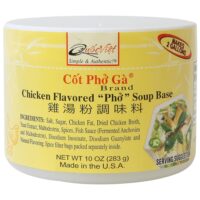



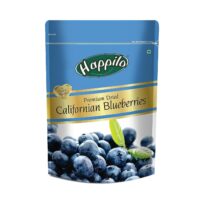
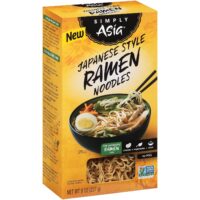

mobyus –
With cookbooks you have to be careful because often times they recipes haven’t been tested. But this cookbook is different. I’ve made 4 dishes so far and they have all been delicious. I mean excellent. This is one of the best cookbooks I own. I think Vietnamese food is one of the best cuisines in the world. Forget about Pho. This is the real thing.
J. Lew –
Wow, chef Phan’s first cookbook just hit the jackpot as far as I’m concerned! I am a cookbook junky, but this book is no junk, it is definitely a keeper. For me, the visual appeal of a cookbook is just as important as its contents. I live in The City where the legendary Slanted Door restaurant is located, but never had occasion to eat there yet. At first glance, the vivid color photos of all the prepared foods throughout the book immediately grapped my attention. Chef Phan really captured the storyline of each and every recipe featured in his book, whether it is making soup stocks, cutting, chopping, pairing of ingredients, methods of cooking: stir-frying, deep-frying, sauteing, grilling, steaming, braising, common street foods, etc., nothing is left to the imagination, they’re all in the book, and then some. The Glossary section with photos of often used Asian ingredients is particularly useful for the Asian food novice. So far, I have made chef Phan’s famous “Shaking Beef” using filet mignon of beef. The result was fairly good, but probably more flavorful if I had used prime ribeye steak instead, which has more marbling of fat. Next to try is the real Vietnamese Pho. My only other input is that I wish the typesetting of the book is more consistent, and that is about jumping throughout the book from big bold red print to bold black print, then to small fine print and faint print, which is hard for the eyes to adjust. Other than this little bit of nitpicking, I think chef Phan’s first book is a real winner!
the_dude –
Excellent cookbook. The Slanted Door was one of my favorite restaurants in SF (and still is) but now I can make many of their dishes at home for 1/4 of the price. One important caveat is that you need access to the ingredient such as, fish sauce, mirin, lemongrass as well as a few more things, otherwise don’t even bother. Specialty items like these come from Asian grocery stores or maybe higher-end markets like Whole Foods. There are a few pages which lay out the important shelf-stable ingredients. Otherwise, the recipes are concise, straightforward, relatively easy, and are accompanied by beautiful full-page photos. I have used this cookbook for years, to the point where I have a handful of the recipes memorized. It’s that good.
casey –
I purchased this book and I am fairly happy with it. It contains many recipes for some of my favorite Vietnamese dishes, including some of the more tedious dishes, such as bánh uot (wet noodles) plus many others.
Some commenters have left feedback that the recipes for these dishes are not traditonal. I am not sure that is exactly true. The recipes seem to be very consistent with recipes I’ve read in other cookbooks, maybe more refined since they come from a chef. For example, the broth (consommé) for pho’ uses several cuts of beef, which provides a dimension of flavors.
Then again, there are different cooking styles in Viet Nam plus every chef and home cook has their own little secrets.
This book does offer solutions for the western kitchen / cook to improvise, so they can make some of these dishes (bánh beo, bánh uot, etc) without buying expensive special equipment.
There’s also a good balance of recipes – not necessarily overwhelmed with seafood so carnivores like me can explore the Vietnamese food scene.
My only reason for the 4 stars is that the book lacks recipes for any sweets or desserts, such as bánh lan (flan) or chè (sweet porridges) or any other sweet street or snack food (Vietnamese flavored ice cream, etc.).
Also, the font type faces are weird – the font for the introduction to the dish is different than the recipe’s list of ingredients and instructions for preparation. This could be the publisher’s decision and shouldn’t reflect on the chef / author. The difference however, just gives the book an unusual look.
Finally, the book does not contain the Vietnamese name of the dishes. If you wanted to taste the dish at a restaurant before trying the recipe at home, it’s harder to know what to order or even if it is on the restaurant’s menu.
However, I haven’t found recipes where steps are ‘missing’ that other commenters have mentioned. I’d like to know to which recipes are they referring. Maybe I missed something in the recipes that didn’t appeal to me.
Otherwise, I think it’s an overall good book.
An-Khanh B. Nguyen –
I have to agree with the reviewer named M.Pham and his/her wish that the book could be more Vietnamese. While I was very excited to order the book on Amazon and counted down till the day I received the parcel at my door, I was a little disappointed reading the book. Despite nice pictures and easy-to-follow recipes, Charles did not fulfill his mission to portray authentic Vietnamese cuisine, not to mention the regional distinct of Vietnamese food.
I was born and grew up in Hanoi, spending 20 years in Vietnam before going overseas to study and work. I always try to experience Vietnamese food in different countries I have the chance to travel too. And my overall impression is, most Westerners and Americans get to know mainly the Southern Vietnamese food, since most Vietnamese expats are originally from the South – they evacuated from Vietnam after the North won the civil war in 1975. But Vietnamese cuisine is really much more than just a few Southern dishes and some Chinese influenced recipes. And Charles did not explore those still covered aspects well enough.
I understand given his Chinese origin, it makes perfect sense for him to include the Cantonese version of his home food in the book. But it surprised me that he did not take the opportunity to introduce to the international audience the less popular but yet real authentic and good Vietnamese dishes. He also did not distinguish the popular Southern food with the food in the North (most famous in Hanoi, with an interesting twist of French cuisine) and the Central (most notably Hue, an imperial city with special dishes of its own). That was just a pity in my opinion, because Vietnamese cuisine is never complete without the unique taste of all regions, namely Northern, Central and Southern Vietnam.
Other readers may find my review a little harsh, but I would like to make my point clearly that, we already have plenty of cookbooks on Vietnamese food, with rather Western-adapted recipes. What we need now, is an authentic portrayal of the national cuisine, something I do not think Charles Phan managed to achieve in his work here.
Christine L. Frederick –
I heard about this book from the radio program I listen to, "Splendid Table, with Lynn Rosetta Casper". Mr. Phan was discussing his technique for making stock/broth, which was different from the long slow cook method that I use. I have also been hooked on Pad Tai for a while, and get frustrated with the drastic change in the dish’s interpretation from restaurant to restaurant…cook to cook even!
I lived in Japan for a while, and was familiar with Japanese cooking, but really had no concept of Vietnamese. Phan emphasizes the translation of cooking in Vietnam, and cooking Vietnamese outside of the country through sourcing your local ingredients and using the method he teaches. The photography is mouthwatering, and the writing is both conversational and odyssey-like in the storytelling.
There were very simple dishes and broths which I’ve already made adaptation of, with my family noting the change in flavor of the broth, and there are dishes which I enjoyed reading about, to absorb more about the culture..but would never make.
If you love to cook fresh, and you dabble in Asian flavors…and especially if you love to peruse cookbooks like they were a Charles Dickens classic, you will appreciate this book. It’s beautiful, instructional, utilitarian and brings the Vietnamese culture into your kitchen, without being overwhelming. I hope you enjoy it as much as my family does!
lorrrraaaaine –
I had been eagerly anticipating this book since I heard whispers about it way back in 2009, so you can imagine how pleased I was to get it in the mail yesterday.
Cannot believe someone wrote a review before me though, but I think #2 is still pretty good (:
Usually the rule is, the more excited you are about something, & the great high expectations the thing has to live up to, you’re usually disappointed, but not here. Love it even more than I could have imagined, but that being said, it usually just takes me 1 or 2 key amazing signature recipes to make a cookbook worthwhile, however I can tell you this book has quite a bit more than the requisite. It is also a very well explained pictorial, full of photos of signature Vietnamese ingredients you will need to hunt, to make some of these recipes, making this a great reference book as well.
I will be looking forward to Mr. Phan’s sequel to this book, as I think he has so much more in his repertoire. An Eleven Madison Park meets Slanted Door cookbook would be phenomenal, no? He cites Chez Panisse as an influence, & clearly it can be seen in his dishes, which is also what has made his restaurants such darlings of the Bay Area. I must say though, I do miss his first first restaurant space on Valencia Street, in the mid 90’s. It was loud and cramped, and the area is still yet grungy, but it gave the food a buzz of NYC edge of anticipation & exclusiveness that made it all so fun.
In circa 1990’s, there was also another Vietnamese restaurant that I loved & was the opposite of haute, which in this case would be home cooking, and it was a just a few blocks down & away from Slanted Door Valencia Street. Really sad story of why the owner Peter closed the restaurant out of sadness. It was an amazing little cheap eat and just a 2 minute drive away. The Imperial rolls recipe in Vietnamese Home Cooking, remind me of the place whose name I can’t remember. Their menu had 165 things, & sadly I always ordered the same few things. Vietnamese Home Cooking reminds me of the little shack of a restaurant in the very best way.
This is an excellent companion to my other Vietnamese cookbook “Into the Vietnamese Kitchen”.
Sadly I don’t live in the Bay Area anymore, however if you are there you should go treat yourself to a reservation at Slanted Door & if you want a cheap eat, visit the food court of the Crocker Galleria which has a Banana Republic type space called “Out the Door” which is quite delish & great for take-away. Truly Slanted Door is one of the great Bay Area institutions & I personally always can’t wait to make a trip to SF so I can make a fancy dinner reservation, where dishes are beautiful & the food even tastier.
I Do The Speed Limit –
If you feel a bit overwhelmed when you venture into an Asian market and would like to change that feeling, this book will be immensely helpful to you. The book is overflowing with information, and I love a cookbook written to include such helpful insight, instruction and coaching.
I am a sponge for new cooking techniques and new ingredients. I was born in the U. S. and my first language is English. I’m of Polish decent. I’ve been interested in Asian cooking for about four years now. I cook all kinds of dishes, but we really love fresh fish, oriental greens and the unique flavors found in Asian recipes. We love the simplicity of the dishes and we love the contrasts of salty, sweet, tangy and good Texas jasmine rice. Our winter garden is currently full–really full–of Asian greens and veggies. And with that said: I think this is a great cookbook. I’ve used it over and over again–in just the short few months I’ve owned it.
So, while I can’t speak for someone born in Vietnam and relocated here and I can’t speak for someone who has a Vietnamese Grandmother on which to rely, I can speak for a majority of those looking at this review and wondering whether to buy this book or not: You will learn a lot from this cookbook, and you will be happy you bought it (or proud you gave it as a present). Use it as a reference book; use it for its recipes; enjoy the pictures; delight in the way the author coaxes all of your senses to blossom; take it with you to your favorite Asian grocery store and smile a lot and nod your head while you refer to it as you search out ingredients, (yes, take it with you instead of just a grocery list and spread the word.)
The author went at this cookbook venture with the intent to teach. And I’m here to say he taught me quite a lot; and thank you so much! This cookbook is not only filled with wonderful, enticing, not overwhelming recipes; it is filled with information. You will get helpful and unbiased wisdom on: Woks, ceramic pots, cleavers, grills, how to choose condiments and important ingredients, and much more.
If you are considering this cookbook and live out in the middle of nowhere, with no access to an Asian market, you may want to check this out of your library before purchase.
The recipes are divided between techniques: Steaming, frying, braising, grilling, and stir-frying; plus soup and street food. There are recipes for condiments, dipping sauces and a few pickles.
Personally, I now have precise times for steaming my whole fish; assurance that I’m grilling my whole fish in the best way possible; I have great fillings for steamed buns; I know how to prime my wok properly and for how long to let the oil heat up before adding food; I know the importance of caramel sauce, and much, much more. I’ve always loved a broth-y fish soup and now I have a beautiful and simple recipe using a whole fish–and I already know I will turn to it often. Because I personally zone in on whole fish in this paragraph, don’t let me mislead you into thinking this is a seafood cookbook; it’s really encompassing and covers beef, pork, other seafood, rice, noodles and veggies.
It’s got beautiful pictures; easy-to-read and easy-to-understand ingredient lists and concise directions; a terrific glossary; an adequate index, plus it is a bound, hard-covered book, with pages made of quality paper.
The author mentions his family and his restaurants frequently, but those mentions don’t seem overpowering, they just add to the charm of the writing.
Not that I’m ready to compare it with other Asian cookbooks, I can already say that this is more of a hands-on, take-it-and-cook-with-it book, than “Beyond the Great Wall” and “Hot Sour Salty Sweet’ by Alford and Duguid. (While I love those two, they slant more towards coupling recipes with an area and therefore seem a bit travel-related and coffee-table style).
I’m very glad to have purchased this cookbook.
beth –
So, I bought this book because it covers Vietnamese home cooking – not just foods from restaurants and street eating but a wider range of everyday dishes. I’m not Vietnamese so I really have no idea what I’m talking about, but my sense is that the recipes contained do cover dishes on the simpler/family-style end of the range. Phan is also American, so I do notice that he goes pretty light on the French-inspired dishes that I have seen in other experiences of Vietnamese food (pate etc.).
The positives: This is a beautiful text, nicely bound, laid out, and photographed. The ingredient guide in the back alone is like eye candy. I like the fact that it is grouped by cooking style (e.g. steaming, stir frying), and that he will go into one style of cooking or one type of food (e.g. steamed buns or clay pot) and then teach you several varieties on that. As far as I can tell this is a great book for someone who really wants to get into Vietnamese cooking as an art, understanding the cuisine as a whole rather than dabbling in a few dishes. I find his advice pretty low-key/practical, and he really walks you through certain details of e.g. how to choose a cleaver, what the difference between using a clay pot and a dutch oven might be. The conclusion is not always "buy the most expensive/task-specific equipment" which I appreciate a lot.
The negatives: I do find the book frustration-, ingredient-, and labor-intensive, so you have to commit. I wouldn’t recommend buying this book if you don’t have access to a good food processor, a good butcher, and a well-stocked Asian grocery store. This is also really not for someone who wants to throw together an Asian-inspired dinner in 20 minutes after getting home from work (though both the lemongrass porkchop and lemongrass chicken are great quick recipes) – for the most part this is weekend cooking for which you have to plan ahead and acquire the ingredients over several trips to the store.
I also do feel like sometimes, the recipes are not written in the most logical way (e.g. pork steamed bun says FIRST to make the dough – which must rise over 2 hrs – and THEN to make the pork – which must marinate overnight) or they actively make things harder (e.g. the sweet potato shrimp fritters instructions have you cross-hatching sweet potato sticks in the frying oil – after a while I just gave up and threw a whole clump in the oil which worked just as well). Other things really do just take a few tries to get right. I feel like these are the types of recipes where you sort of find your way after the second or third time making them and then they’re pretty good – but following the steps to the letter does not seem to be the optimal way to proceed.
For people with a Western palate, I’d add: Vietnamese cooking really does use a lot of sugar and salt, and while I thought this book might cut down on those ingredients given SF’s health-crazed foodies, I do still find the recipes pretty sweet and salty so you may need to adjust accordingly. Also, it is quite common to combine meat and fish in the same dish, which takes some getting used to and is worth being prepared for (since that applies to a lot of the recipes).
Overall, I really do enjoy the food that has come out of this book and I give Phan credit for what I think is a truly unique/distinct cookbook – it clearly has a lot of his personal voice/work/knowledge wrapped in and I think it covers a different segment of Vietnamese cuisine than many other cookbooks might. It’s also pretty region-agnostic which is cool (since many of the recipes he seems to have collected through travels around Vietnam, so it’s not along the lines of those cookbooks that just display a list of specialties from a chef’s grandmother’s hometown). As it’s my first Vietnamese cookbook, though, I might supplement it with another volume that’s a bit easier to cook along with.
Stephen Foster –
I very rarely leave 5-star reviews.
I can tell that this one is going to get thumb-eared very quickly. This is the food that I gravitate towards, explained better and in more detail than any of the 50-odd other Asian cookbooks I own. The book goes deep, very deep, which delights me (I made rice paper!), but it also clearly explains utterly basic things, with photographs, so it’s great for basic or even just aspiring cooks.
A quick example: the recipe for caramel sauce lists exactly two ingredients (palm sugar and fish sauce). Any competent 8 year-old could make it, it keeps for months, and the combination might well stun you: toss it with some shrimp and scallions, and dinner is READY. Can’t find palm sugar? Substitute light brown and barely notice the difference. (But it’s easier to melt any sugar in a 280F oven rather than on a stove burner.)
A slower example – Pork with Young Coconut Juice – is a recipe that takes second place to nothing on Earth. If you take the time to make the utterly porkalicious stock first, and find really fresh coconuts, jaws will drop. Same goes for the Lemongrass Beef Stew.
Uniquely for an Asian cookbook, it specifies good-quality, sustainable (pastured, grass-fed, etc) ingredients, even when making stock, and clearly explains why.
If you are interested, and just starting, you could spend YEARS with this book before you absorb it all. If you are Vietnamese-American, and looking for a cookbook to give your kids, this one is a very strong candidate. I recommend the hardcover rather than the softcover, or you might have to eventually replace it and lose years of hastily-scrawled notes, like my sugar/oven one, above. That kind of cookbook.